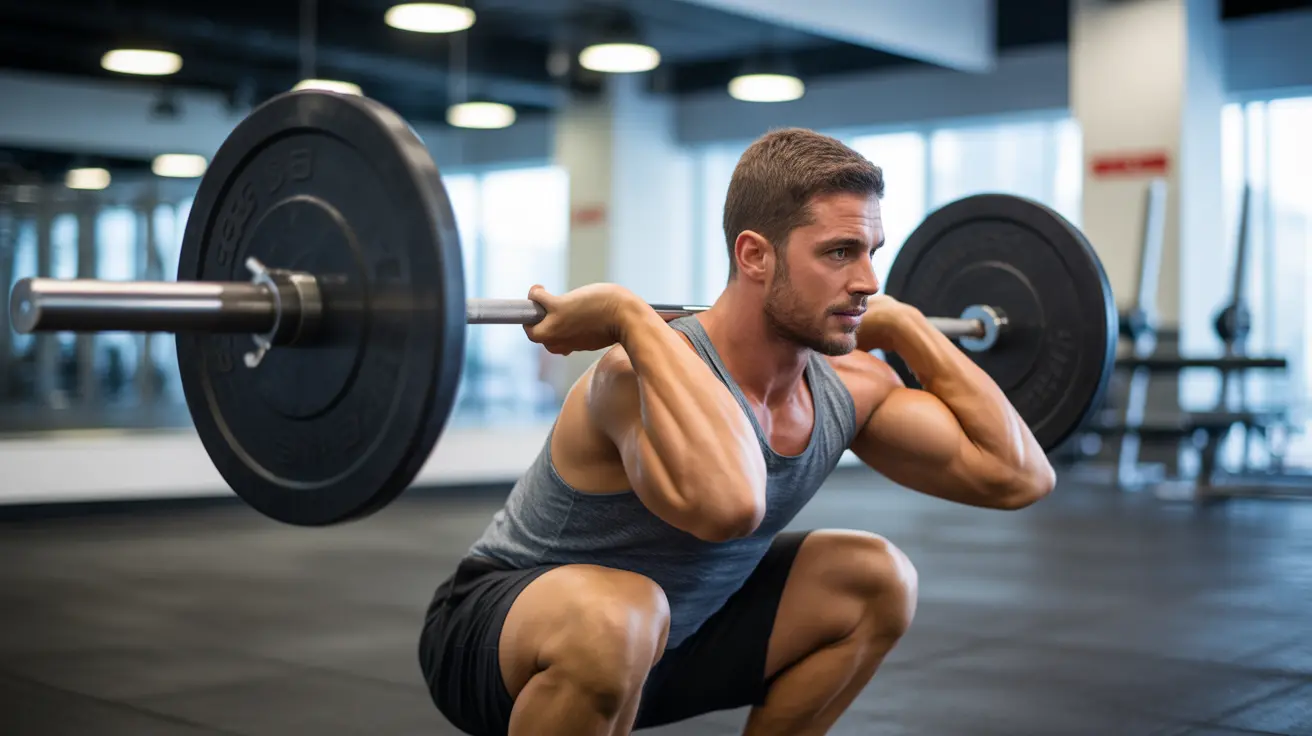For strength trainers and fitness enthusiasts, understanding the differences between front squats and back squats is crucial for optimizing workout routines and achieving specific fitness goals. Each variation offers unique benefits and challenges, making them valuable additions to any training program.
In this comprehensive guide, we'll explore the key distinctions between these fundamental exercises, helping you make an informed decision about which squat variation best suits your needs and fitness objectives.
Understanding the Basics
Front squats position the barbell across the front deltoids and clavicles, while back squats place the bar across the upper back. This fundamental difference in bar placement creates distinct mechanical advantages and challenges for each variation.
Muscle Activation Patterns
Primary Muscle Groups
Both squat variations target the lower body, but they emphasize different muscle groups. Back squats typically allow for heavier loads and provide greater activation of the posterior chain, including the glutes and lower back muscles. Front squats, meanwhile, place more emphasis on the quadriceps and core muscles due to the forward bar position.
Core Engagement
Front squats demand significantly more core activation to maintain an upright torso position and prevent forward lean. This increased core engagement makes front squats particularly effective for developing core strength and stability.
Mobility Requirements and Form Considerations
Front Squat Mobility Demands
Front squats require greater upper body mobility, particularly in the wrists, shoulders, and thoracic spine. The front rack position demands good flexibility in these areas to maintain proper form and bar placement.
Back Squat Form Elements
Back squats generally allow for a more natural movement pattern and require less upper body mobility. However, they still demand good hip and ankle mobility for proper execution.
Safety and Joint Impact
Lower Back Considerations
Front squats typically place less stress on the lower back due to the more upright torso position required. This makes them potentially safer for individuals with lower back concerns.
Knee Stress Analysis
While both variations impact the knees, front squats may create more anterior knee stress due to the increased forward knee travel. However, this can be managed with proper form and programming.
Training Applications
Strength Development
Back squats generally allow lifters to handle heavier loads, making them excellent for maximizing overall strength gains. Front squats, while typically performed with lighter weights, are particularly effective for developing quad strength and improving posture.
Athletic Performance
Front squats often transfer well to athletic movements due to their emphasis on core stability and upright posture. They're particularly beneficial for sports requiring explosive front-loaded movements.
Frequently Asked Questions
What are the main differences in muscle activation between front squats and back squats?
Front squats primarily target the quadriceps and core muscles, while back squats provide greater activation of the posterior chain, including the glutes and lower back. The front squat's bar position requires more core engagement to maintain posture.
Which squat variation is better for people with lower back or knee pain?
Front squats typically place less stress on the lower back due to the more upright torso position, making them potentially better for those with lower back issues. However, individuals with knee pain should carefully assess their form and comfort with each variation, as front squats can create more anterior knee stress.
How do mobility requirements differ between front squats and back squats?
Front squats demand greater upper body mobility, particularly in the wrists, shoulders, and thoracic spine for the front rack position. Back squats require less upper body mobility but still need good hip and ankle flexibility.
Can front squats or back squats help more with building quadriceps strength and size?
Front squats typically provide greater quadriceps engagement due to the more upright torso position and forward knee travel. However, back squats allow for heavier loads, which can also contribute significantly to overall quad development.
What factors should I consider when deciding whether to include front squats or back squats in my workout routine?
Consider your mobility limitations, training goals, injury history, and comfort with each movement. Factor in your sport-specific needs if applicable, and remember that both variations can be valuable in a well-rounded program. Many athletes benefit from incorporating both types of squats into their training routine.




